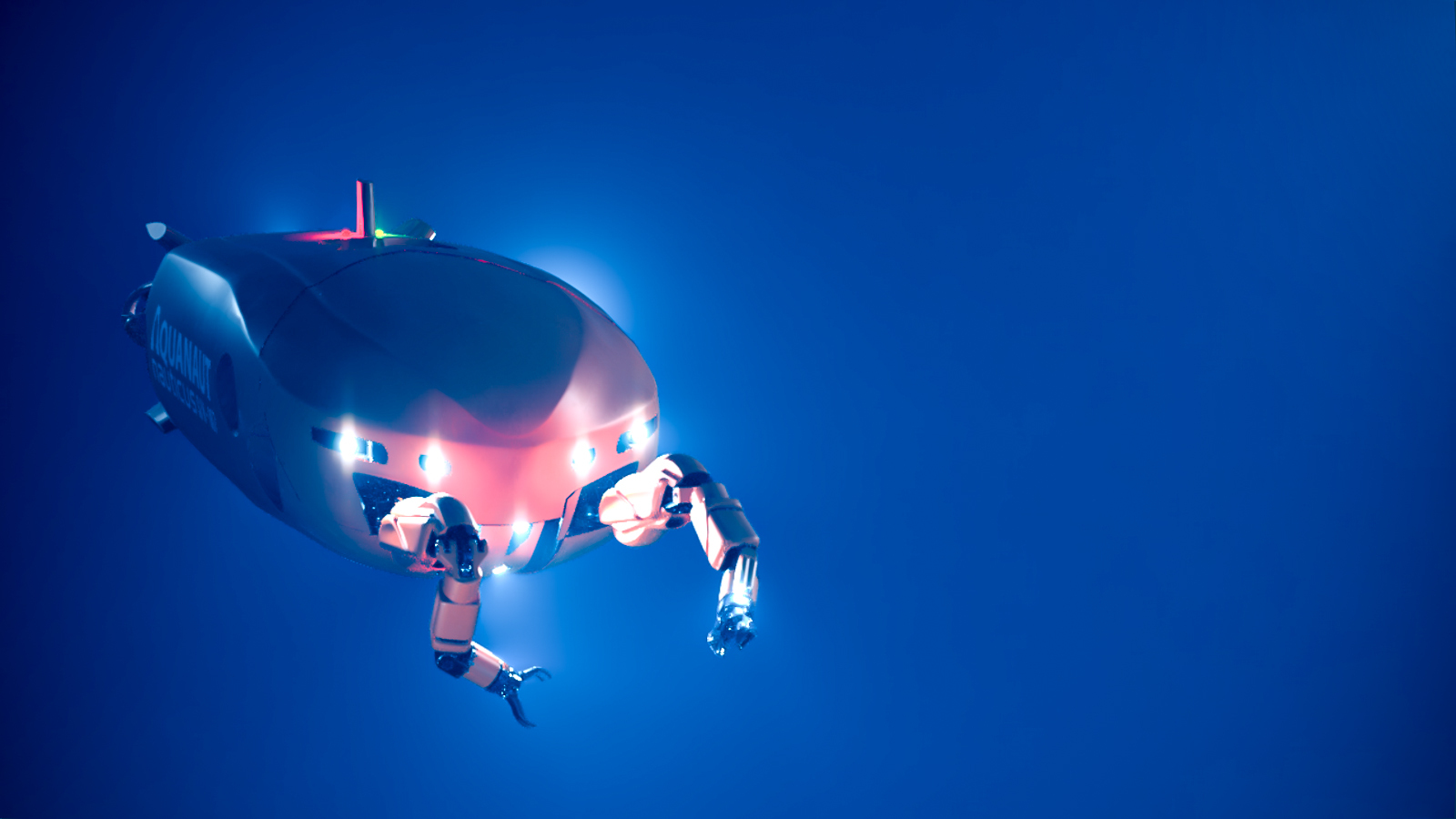
Aquanaut is Nauticus Robotics’ flagship product and utilizes the same autonomy software as DIU’s upcoming amphibious robot. (Graphic provided by Nauticus Robotics.)
WASHINGTON — The Defense Innovation Unit last week awarded a contract to Nauticus Robotics to develop an amphibious robot capable helping Marines clear shallow waters of mines and make the difficult transition from sea to land, according to a company executive.
The contract, the value of which neither DIU nor Nauticus was willing to disclose, includes two elements: The first is modifying a commercial-off-the-shelf robot to make it suitable for the difficult traversal between land and sea. The second part is for Nauticus to adapt its autonomy software, dubbed ToolKITT, to make it capable of guiding the amphibious robot around obstacles and identifying undersea mines as well as other targets of interest.
“If you only could crawl on the bottom in the sand [and] you came upon a log or an impediment to going forward, you don’t know if you should turn right or left,” Donnelly Bohan, Nauticus’ chief operating officer, told Breaking Defense on Oct. 4, a day ahead of the announcement. “You don’t know if it’s six feet one way or 20 feet. Our technology would allow you to, you know, just swim over it.”
DIU’s program, called the “Amphibious Autonomous Response Vehicle,” is the latest in the Pentagon’s attempts to take “the man out of the minefield.” For the Navy and Marine Corps, one of the most sought after uses for unmanned and autonomous vehicles is to confront undersea mines without having to send humans into harm’s way.
Subsequent to Nauticus’ announcement, DIU on Oct. 12 said it had selected Nauticus as well as Greensea Systems from a pool of 67 potential vendors for a “competitive rapid prototyping effort.” Both teams will deliver prototype vehicles to the Marine Corps for evaluation by fall 2023, according to a DIU statement. Nauticus’ will deliver its “Terranaut” drone while Greenseas, in partnership with Bayonet Ocean Vehicles, will submit its Bayonet-250 crawler.
DIU’s “prototypes will reduce risk to the operator by allowing them to provide abstract human control over one or more autonomous vehicles,” Alex Oliver, DIU’s program manager, told Breaking Defense. “In addition to the [explosive ordnance disposal] mission, this class of vehicle has obvious utility for a range of military missions — from reconnaissance to force protection.”
The challenge of doing that in a littoral zone through a robot presents a variety of traversal challenges, according to Bohan. For instance, the drone must be able to maintain pressure against the sea floor to gain enough traction for its tracks to move it from the water onto land. It also must have the appropriate sensors that can detect debris and other items that might get in its way while navigating from point to point.
What separates DIU from other military research agencies is its mission to engage companies outside the traditional defense contracting world. And that is exactly where it found Nauticus.
Bohan said the company was formed seven years ago from a group of former NASA employees whose primary skills were focused on robotics being used in space. The company quickly saw the potential for a transition from robotics in space to the undersea environment and began engaging the military, since some employees had backgrounds in the Marine Corps.
The drone Nauticus will adapt for DIU is dubbed the Mission Specialist Defender, produced by VideoRay, and is already being used by certain US Navy programs. Bohan characterized the drone as being “two-man portable” and small enough to fit on a home office desk.
Bohan also said Nauticus’ autonomy software, ToolKITT, is designed to be changed based on the platform and will be tailored to meet DIU’s program. The software is currently in use on Nauticus’ commercial drone product, the Aquanaut.
Major trends and takeaways from the Defense Department’s Unfunded Priority Lists
Mark Cancian and Chris Park of CSIS break down what is in this year’s unfunded priority lists and what they say about the state of the US military.


























